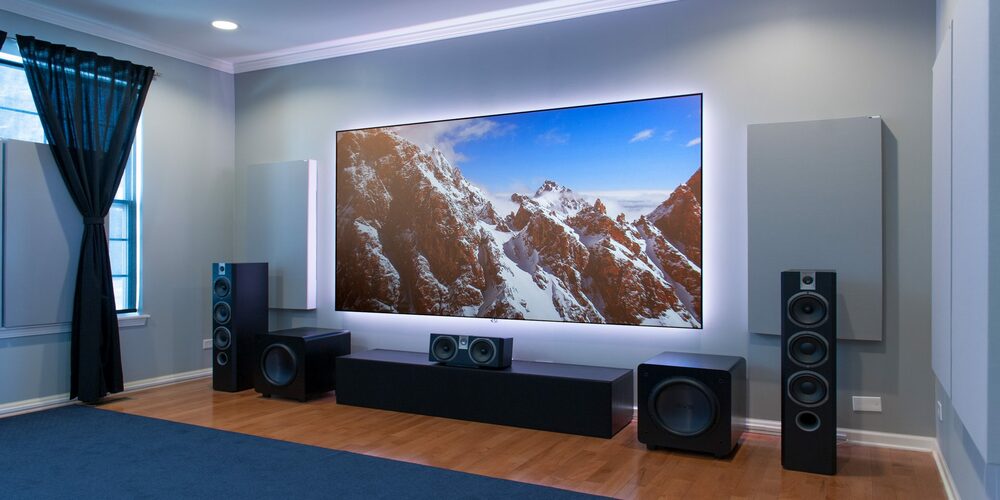The issue is which projector screen to purchase. Those were the days when the only choice was a conventional white screen. Now there are black displays on the market. Which prompts you to ask, “Which is better?” Both white and black diamond screen have benefits and drawbacks.
Colour Clarity in White And Black Screen
- Both of these displays will provide the most excellent colour quality. You will obtain the most accurate colours with these.
- However, if you want the finest of the best, dark displays are the way to go. This is because dark displays provide far greater contrast. When you utilize a dark screen, the colours in your projection will stand out more.
- When compared to a white screen, many lighter colours might be missed. You will lose details in your picture’s whites and brightness. Your image’s blacks will also seem faded.
- However, dark displays have flaws. Occasionally, certain places will be noticeably brighter than others. When you choose black, you may see shimmering effects on the screen.
Reflectiveness
- Another significant distinction between black and white projector panels is their reflecting qualities. We are all aware that black absorbs light and white reflects it. This is why we wear white in the summer and black in the winter.
- Similarly, white screens reflect a large portion of the light that strikes them. This is both a positive and negative development.
- It’s useful since it lets you see what’s on the screen from any angle. You will receive a good image in the centre or on the side of the screen. The reflected light lets individuals far away see what is going on.
- The issue with its reflectiveness is that it will illuminate the whole room. If you’re planning to build a home theatre, you want your surroundings to be dark. This, however, will be impossible with a white screen.
- Furthermore, since so much light is bounced away, your picture will lose a lot of contrast. This is why, in a bright environment, it might be challenging to see what’s on the screen.
- When you obtain a dark screen, however, the light is absorbed. This has a very different impact.
- Aside from that, black screens have excellent absorbency. You won’t have to worry about lighting your home theatre using it. You may also enjoy projections even while your windows are open.
Features
- So far, we’ve shown that black outperforms white in various situations. So, why is white still the default colour? It’s because there are so many possibilities.
- Black projector displays are a relatively recent invention. Their market share is growing, but they still don’t have as many possibilities as white screens. This is why, for the most part, people prefer white displays.
- You may obtain a white screen in whatever size you like. Screens with unique properties, such as allowing sound to travel through them, are also available. You may hide your speakers behind the screen using these.
- We may see dark panels with comparable characteristics in the following years. However, for the time being, dark displays are devoid of possibilities.
Conclusion
To sum up, Black screens:
- Colours that are more clear and vibrant
- It does not affect the brightness of the room.
- It is suitable for usage in daylight.
While using white screens:
- Allow you to observe from any angle.
- You may obtain a lot of features.
It may be much less expensive than dark screens.
So, which is better? As previously said, neither. It all depends on your choices and what you want. However, with this comprehensive guide, you should be able to tell the difference. This will assist you in deciding whether to acquire a black or white screen.

